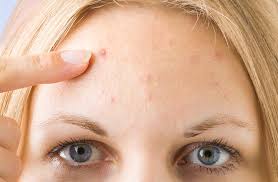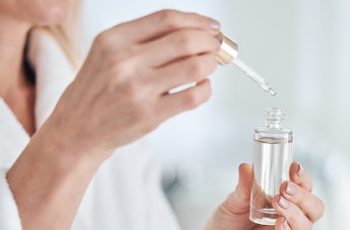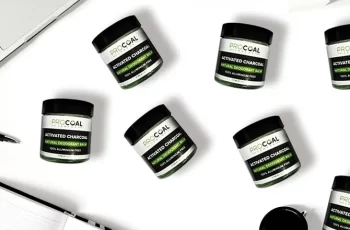Ask the Dermatologist: Should I Pop Pimples or Avoid Them?
There’s a reason Dr. Pimple Popper has over 16 million followers on TikTok and over 8 million subscribers on YouTube by 2024 — popping pimples can be deeply satisfying, even if you’re watching someone else do it.
But before you walk in front of the mirror and start picking at your own face, remember that Dr. Pimple Popper, also known as Dr. Sandra Lee, is a board-certified dermatologist who knows how to safely pop pimples without spreading bacteria or leaving scars on the skin.
We asked our own dermatologist, Dr. Anthony Nuara, MD, FAAD, what he thinks about this tempting habit and whether it’s safe to pop pimples at home.
The Science Behind Pimples
Every pore on the body’s surface leads to a follicle that contains hair and sebaceous glands. These glands secrete an oily substance called sebum that moisturizes the skin and hair. When pores become clogged, inflammation occurs, which can lead to breakouts. This blockage can be caused by excess oil, abnormal keratin formation, or an increased number of bacteria on the skin. 1
Although pimples are often used interchangeably with acne, they are not the same thing. Acne is an inflammatory skin disease. Pimples or comedones are simply symptoms of this disease.
Pimples may appear as open comedones (blackheads) or closed comedones (whiteheads). While pimples can appear anywhere, they are most common on the face, chest, shoulders, and upper back.
The Pros and Cons of Popping Pimples
If a pimple becomes large and raised with a whitehead on top, you may be tempted to pop it with your fingernails. We generally advise against this. Nails are sharp and full of bacteria. Inflamed skin can also tear easily and form scars.
There are definitely more cons to popping pimples than pros. Here are a few.
Disadvantages of Popping Pimples:
Bacteria Spread
Permanent Scars
Delayed Natural Healing Process
More Inflammation
Regret
Are There Any Benefits to Popping Pimples?
Instant gratification while it works
Expert advice from dermatologists
If you have a pimple that’s about to pop, do your best to hold back. Most pimples will heal on their own without you having to do anything. So, if you can wait, that’s always the wisest choice.
Secondly, you should ask yourself if the pimple is ready to pop. If it’s deep under the skin’s surface and has no head, leave it alone. Trying to squeeze it may push the contents deeper and increase inflammation. You also run the risk of spreading bacteria to the inner layers of the skin, which may make the healing process take longer.
The real key to reducing acne is not treating current pimples, but preventing future ones. For acne-prone skin, the following foundation skincare products are recommended:
Night Renewal Cream: The retinoids in this product (such as Granactive) keep pores clear, thereby preventing pimples from forming altogether. This product also contains peptide growth factors that increase collagen and elastin, which speeds up acne healing.
Niacinamide Lotion 10%: Niacinamide helps prevent acne-related inflammation while balancing sebum production, making it an important component of any acne treatment. It also helps eliminate hyperpigmentation caused by acne scars.
14% Azelaic Acid Cream: Like niacinamide, azelaic acid prevents inflammation that causes blackheads to form while killing bacteria on the skin and reducing the buildup of dead skin cells that clog pores. At the same time, azelaic acid can prevent hormonal acne by breaking the link between elevated testosterone levels and increased sebum production in the skin. 2
Hyaluronic Acid Lotion: As a powerful humectant, hyaluronic acid draws moisture into the skin and seals it. Not only does this deeply hydrate and ensure the skin is hydrated, it also speeds up the skin’s natural healing process, which can help treat current breakouts and acne scars.
All products in the Foundation Skincare range are safe to layer and will not cause irritation. It is best to apply a thin to thick layer for best results.
Safety Tips for Popping Pimples
While we generally recommend not popping pimples, there are some methods of popping pimples that you can use if you can’t resist the temptation. I recommend that my patients use two cotton swabs to gently squeeze and remove the pus. Never squeeze a pimple too hard, and stop if you see blood, as this is a sign that the pimple is too deep to remove.
Alternatives to squeezing pimples
The best option for squeezing a pimple is to wait it out. If you need to do something, you can try:
Use a patch or solution containing salicylic acid.
Apply a warm (not hot) compress to the pimple for a few minutes to loosen the pus.
Try to limit your time in front of the mirror to avoid the temptation to express yourself.
Follow a preventative skincare routine with proven acne-fighting ingredients.
FAQs
Still have questions about squeezing pimples?
Can a dermatologist remove pimples?
A board-certified dermatologist or trained esthetician can safely “pop” pimples without leaving too much scarring. You can also inject medications like cortisone directly into large pimples to calm them.
Do I need to pop a pimple if it’s white?
You should avoid squeezing pimples, but if they’re white, squeezing them is safer than popping a dead pimple. If other methods like bandages or heat don’t work, use the cotton swab technique suggested above.
What if I don’t pop a pimple?
If you leave it alone, pimples usually heal with minimal scarring. This takes about three to seven days. Deeper pimples or cysts may take several weeks to heal.
Does popping pimples cause more pimples?
While popping pimples won’t cause more pimples, it can make existing pimples worse and prolong the healing process.
DQH Knowledge drop: In your 20s, your skin cell turnover decreases. (Cell turnover is a key component in keeping your skin youthful.) You know what else slows down? Your collagen production. Starting in your 20s, collagen decreases by about 1 percent per year. Should you want to prevent fine lines and wrinkles, start by eliminating behaviors that contribute to premature aging. “If it’s bad for you, it’s bad for your skin,” says dermatologist Michel Somenek.
“Cigarette smoking reduces blood flow to the skin and causes premature wrinkling and a dull skin texture. Making the repeated pursed motion to inhale can also cause smoker’s lines. Alcohol and recreational drugs are toxins for the skin that damage its cellular structure and DNA,” Somenek tells us. “The faster you eliminate vices while you are young, the better chance your skin and body have to recuperate.” Also, adopting an anti-aging routine in your 20s is key. After all, the best offense is a good defense. We spoke to Somenek and experts Joshua Ross and Audrey Kunin to find out more.
Keep reading for the best anti-aging products for your 20s, according to skincare professionals.
Sunscreen
“We all know that the sun is the number one cause of skin aging and starting the prevention in your 20s is very important,” Ross says. “The majority of your sun damage won’t start to appear until you’re in your 30s, so don’t wait until you see it surface or you’ll be behind the curve. Stay ahead of it with a good-quality zinc-based sunscreen worn daily.”
Farmacy Green Defense Daily Mineral Sunscreen
An invisible sunscreen with SPF 30, plus botanical extracts meant to protect skin with tons of antioxidants. Bonus: It’s clean and fine to use under makeup.
Bareminerals Complexion Rescue™ Tinted Moisturizer Broad Spectrum SPF 30
Although we recommend you use your SPF and moisturizer separately, we also understand moments when you don’t have time or energy for that extra step. For those times, this bareMinerals moisturizer is a great thing to have on hand.
Vitamin C Serum
“A great introduction to anti-aging is to start with a vitamin C serum in your morning skincare routine,” Ross says. “It’s a powerful antioxidant that will neutralize free radicals and brighten the skin.” He adds that it’s a great way to counteract the effects of the sun’s harmful rays, which, as previously mentioned, are among the biggest causes of premature aging.
Drunk Elephant C-Firma™ Vitamin C Day Serum
The Drunk Elephant C-Firma is a lightweight serum that promises to give skin a glow by combining the brightening powers of vitamin C with ferulic acid, l-ascorbic acid, and vitamin E. The included sodium hyaluronate is meant to replace hydration loss, so you shouldn’t have to deal with any irritation.
Sunday Riley C.E.O. Rapid Flash Brightening Serum
This potent serum is jam-packed with vitamin C (15 percent, to be exact), which means it’s a potential superstar at both brightening skin and dousing it in antioxidants.
Peptides
Using peptides on your skin has many benefits, says Somenek. “The skin barrier is what defends the body against pollution, UV rays, bacteria, and toxins. It can be damaged by several everyday factors. Using topical peptides aids in building a stronger barrier,” he says. “Peptides comprise elastic fibers, which are a type of protein. These fibers help to make skin appear taut and firm. Peptides can also help repair damaged skin, relieve inflammation, and even out skin tone. Some peptides can kill acne-causing bacteria that is common in 20-somethings.”
Kunin agrees, saying, “Peptides are an excellent entry point for supporting collagen.” She recommends looking for face and eye treatments that contain these collagen-boosting powerhouses.
Charlotte Tilbury Magic Eye Rescue Cream
This Charlotte Tilbury super-emollient eye cream has a base of coconut oil and shea butter (read: it’s incredibly hydrating). Botanicals plus peptides are meant to help reduce dark circles and boost collagen, respectively.
This creamy moisturizer serves up potent collagen-boosting peptides and pycnogenol, and antioxidant-rich vitamin C. “Instead of sitting on top of the skin, peptides penetrate the outer layer so they go deep. The ‘signals’ they send tell the cells to produce elastin and collagen, which are needed for youthful-looking skin,” explains Somenek.
At-Home Peel Pads
Remember that skin cell turnover fiasco we talked about earlier? One way to help support it is by exfoliating. “Exfoliation is important to help keep skin fresh and luminous,” Kunin says. She recommends using at-home peel pads as an easy and effective way to exfoliate.
“The goal in your 20s is to fight the slowing pace of cell turnover. It is wise to use products that gently exfoliate, yet still remove oil and other impurities. Products that have Alpha Hydroxy Acids (AHA) or Beta Hydroxy Acids (BHA) are a good choice.”
According to Somenek, you should only exfoliate two to three times a week. “People of all ages are guilty of over-exfoliating and that can be too much of a good thing,” he says.
Dermadoctor Kakadu C Intensive Vitamin C Peel Pad
A few swipes of this Derma Doctor powerful peel pad promise to leave your skin glowing and smooth, thanks to the seven (yes, seven) types of chemical exfoliants, including AHA and BHA. It also contains vitamin C via Kakadu plum extract for added brightening and antioxidant protection.
KEY INGREDIENTS Kakadu plum extract is sourced from the Kakadu plum, a fruit grown in northern Australia. It contains vitamin C, which restores the skin’s natural barrier, increases collagen production, and soothes irritation.
Dr. Dennis Gross Skincare Alpha Beta® Universal Daily Peel Pads
These are the gold standard of peel pads, with a cult following and over 900 five-star reviews on Sephora. They’re easy to use and contain a blend of anti-aging exfoliating acids.
Emollient Night Cream
“In your 20s, you need to start upping the hydration in your skincare routine. You may have been cautious of over-moisturizing because of acne in your teens, but as you enter your 20s, your skin transitions and becomes drier,” Ross says. “I recommend an emollient night cream added into your evening skincare regimen.”
“Twenty-somethings need to make sure that they are not using creams that will clog their pores and cause excess oil production,” says Somenek. Opt for non-comedogenic products.
Cerave Skin Renewing Night Cream
One great choice is the CeraVe Skin Renewing Night Cream, which is a non-comedogenic night cream that leaves skin soft and glowy. It combines the moisturizing powers of ceramides and hyaluronic acid.
RoC Retinol Correxion Max Hydration Creme
“The best night cream ingredients contain retinol, benzoyl peroxide, and/or salicylic acid or hyaluronic acid. The goal is to moisturize, yet remove excess oil,” says Somenek. This Roc Retinol Correxion cream fits the bill as it contains both hyaluronic acid and retinol so it promises to moisturize while also being non-comedogenic.



